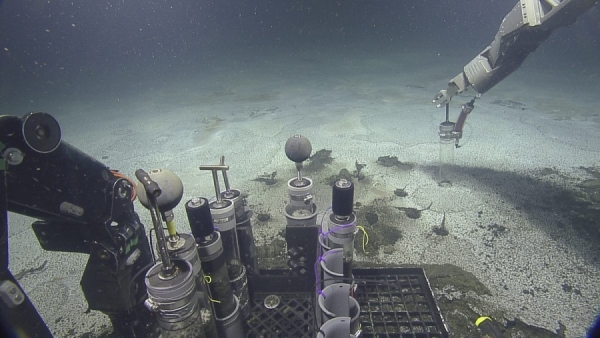Most life on Earth relies on the sun’s energy for survival, but what about organisms in the deep sea that live beyond the reach of its rays? A new study led by Woods Hole Oceanographic Institution (WHOI), published in The ISME Journal, sheds light on how a species of foraminifera, single-celled organisms found in almost all marine habitats, thrives in a dark, oxygen-free environment.
For this foraminifera species, the answer is chemoautotrophy, a metabolic process that utilizes inorganic energy sources, perhaps sulfide, to take up carbon, enabling it to survive in oxygen-free environments. Chemoautotrophy has been observed within Bacteria and Archaea, which are microbial organisms without a true nucleus. However, foraminifera are eukaryotes, meaning they have a well-defined nucleus, which houses an organism's genetic material.
At depth, the team utilized modified push cores, or injector cores, to collect sediment samples covered with a white bacterial mat. (Photo Credit: Ocean Exploration Trust, NOAA Ocean Exploration, and NASA)
Sci/Tech Top Stories Ecosystems

